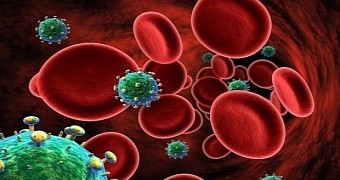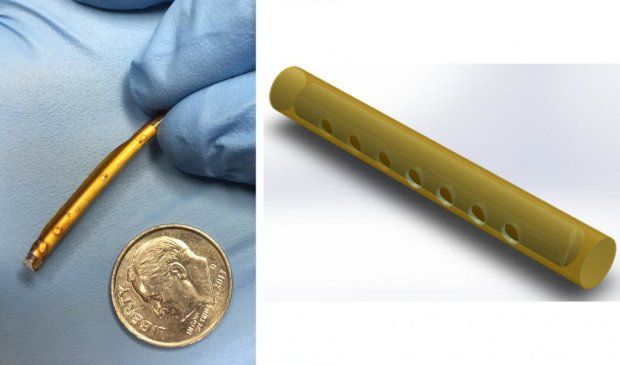A study published earlier this week in the journal Antimicrobial Agents and Chemotherapy describes a novel device that scientists argue has the potential to prove a worthy ally when it comes to preventing and treating HIV/AIDS.
The device, photos of which are available below, is the brainchild of researchers at the Oak Crest Institute of Science in the US. It is about the size of a matchstick and its design makes it easy to implant right under a patient's skin.
In their paper in the journal Antimicrobial Agents and Chemotherapy, the scientists who designed and developed it explain that the device works by releasing potent antiretroviral drugs at a steady pace. In doing so, it stops the spread of HIV.
In a series of experiments carried out in laboratory conditions, the researchers fitted dogs with such devices. The pooches were monitored for 40 days straight, during which time the device worked perfectly and no side effects were documented.
Given the encouraging outcome of these experiments, the Oak Crest Institute of Science researchers say that they wish to further improve on the device's design and figure out a way to keep it operational in the body for 12 months in a row.
Treating HIV is tricky business
The scientists behind this research project say that they created their innovative implantable device in an attempt to solve a major hurdle that all doctors treating HIV/AIDS patients face: making sure that people receive their drugs at the right time and in the right dosage.
“It’s unfortunate, but patients do not always follow the dosing instructions as prescribed. In clinical trials erratic administration of drugs has led to highly variable efficacy outcomes,” Oak Crest Institute of Science researcher Marc Baum said in an interview.
“This novel device will revolutionize how we treat or prevent HIV/AIDS as it delivers powerful HIV-stopping drugs and eliminates one of the key obstacles in HIV/AIDS prevention - adherence to proper dosing regimens,” the specialist went on to explain.
In a way, this device designed to treat HIV/AIDS patients is not very different to the implants for contraception that were introduced in the US in 1993. Hence, medical experts and the people in their care might actually consider giving it a try.

 14 DAY TRIAL //
14 DAY TRIAL // 

